第66章 MONEY OR SIMPLE CIRCULATION(47)
Under certain conditions,an increase or decrease in the quantity of either specie in circulation,or tokens of value in circulation,seems to have a similar effect upon commodity-prices.If there is a fall or rise in the value of gold and silver,in which the exchange-value of commodities is measured as price,then prices rise or fall because a change has taken place in their standard of value;and an increased or diminished amount of gold and silver is in circulation as coin because the prices have risen or fallen.The observable phenomenon,however,is that with an increasing or diminishing volume of means of circulation,prices change while the exchange-value of commodities remains constant.
If,on the other hand,the amount of value-tokens in circulation falls below the requisite level,or rises above it,then it is forcibly reduced to that level by a fall or rise of commodity-prices.The effect in both cases appears to be brought about by the same cause,and Hume holds fast to this appearance.
Any scholarly investigation of the relation between the volume of means of circulation and movements in commodity-prices must assume that the value of the monetary material is given.Hume,however,considers exclusively periods when revolutionary changes in the value of the precious metals take place,that is revolutions in the standard of value.The rise in commodity-prices that occurred simultaneously with the increase in the amount of specie consequent upon the discovery of the American mines forms the historical background of his theory,and its practical motive was the polemic that he waged against the Monetary and Mercantile systems.It is,of course,quite possible to increase the supply of precious metals while their costs of production remain unchanged.On the other hand,a decrease in their value,that is in the labour-time required to produce them,will in the first place be attested only by an increase in their supply.Hume's disciples accordingly stated subsequently that the diminished value of the precious metals was reflected in the growing volume of means of circulation,and the growing volume of the means of circulation was reflected in increased commodity-prices.But there is in reality an increase only in the prices of exported commodities which are exchanged for gold and silver as commodities and not as means of circulation.The price of those commodities,which are measure in gold and silver of reduced value,thus rises in relation to all other commodities whose exchange-value continues to be measured in gold and silver in accordance with the scale of their former costs of production.Such a dual evaluation of exchange-values of commodities in a given country can of course occur only temporarily;gold and silver prices must be adjusted to correspond with the exchange-values themselves,so that finally the exchange-values of all commodities are assessed in accordance with the new value of monetary material.This is not the place for either a deion of this process or an examination of the ways in which the exchange-value of commodities prevails within the fluctuations of market-prices.Recent critical investigations of the movement of commodity-prices during the sixteenth century have conclusively demonstrated that in the early stages of the evolution of the bourgeois mode of production,such adjustment proceeds only very gradually,extending over long periods,and does not by any means keep in step with the increase of ready money in circulation.[1]Quite inappropriate are references --in vogue among Hume's disciples --to rising prices in ancient Rome brought about by the conquest of Macedonia,Egypt and Asia Minor.The sudden and forcible transfer of hoarded money from one country to another is a specific feature of the ancient world;but the temporary lowering of the production costs of precious metals achieved in a particular country by the simple method of plunder does not affect the inherent laws of monetary circulation,any more than,for instance,the distribution of Egyptian and Sicilian corn free of charge in Rome affects the general law which regulates corn prices.For a detailed analysis of the circulation of money,Hume,like all other eighteenth-century writers,lacked the necessary material,i.e.,on the one hand a reliable history of commodity-prices,and on the other hand,official and continuous statistics regarding the expansion and contraction of the medium of circulation,the influx or withdrawal of precious metals,etc.,in other words material which on the whole only becomes accessible when banking is fully developed.
The following propositions summarise Hume's theory of circulation.1.Commodity-prices in a given country are determined by the amount of money (real or token money)existing therein.2.The money circulating in a given country represents all commodities which are in that country.As the amount of money grows,each unit represents a correspondingly larger or smaller proportion of the things represented.3.If the volume of commodities increases,then their prices fall or the value of money rises.If the amount of money increases,then,on the contrary,commodity-prices rise and the value of money falls.